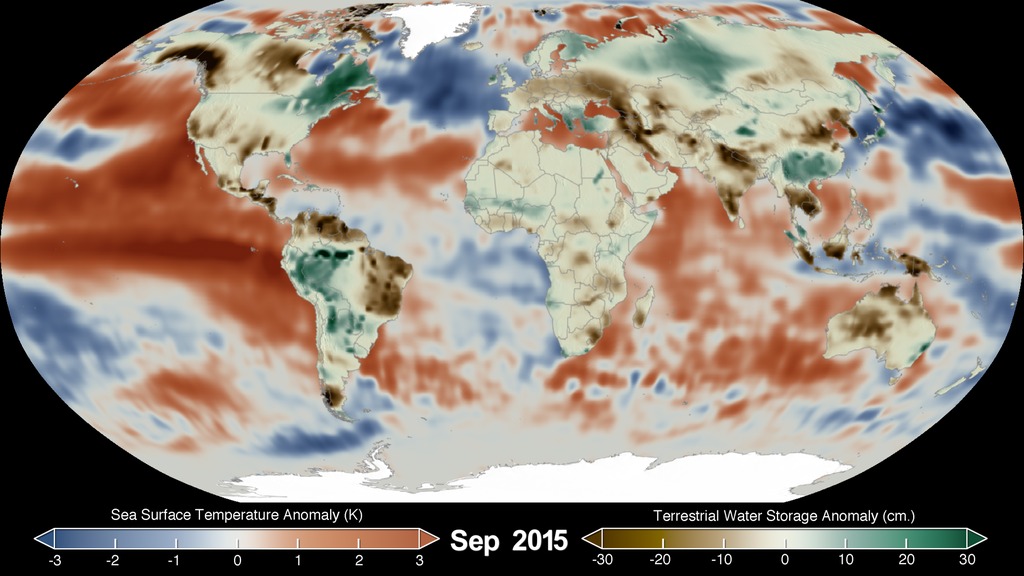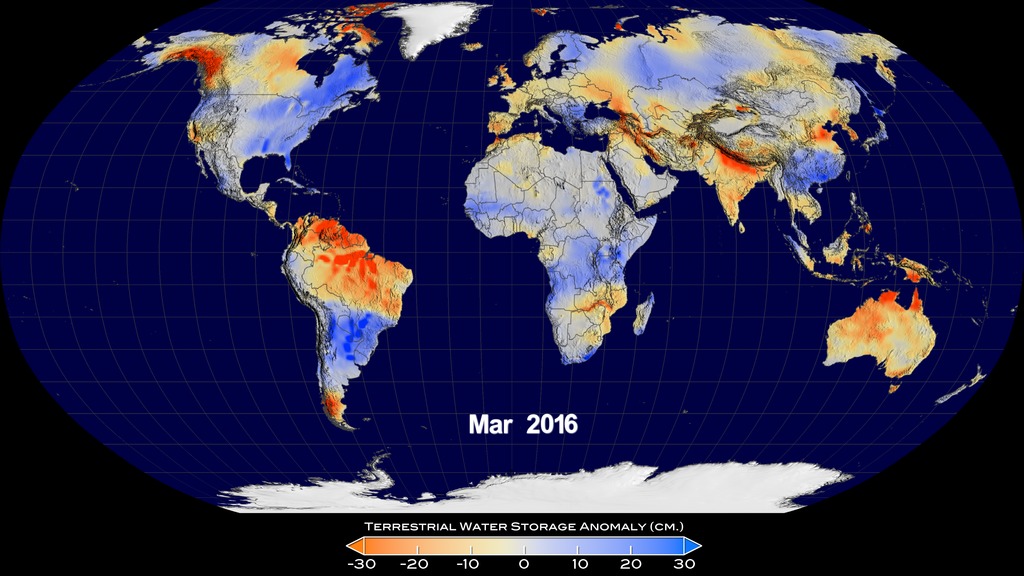A newer version of this visualization is available.
Terrestrial Water Storage Anomaly 2002 - 2015
Animation showing Terrestrial Water Storage Anomaly (TWSA) data from 2002 to 2015. Browns indicate areas with less ground water than normal and greens are areas with more ground water than normal, which correlates to droughts and floods in these various regions.
This video is also available on our YouTube channel.
A pair of experimental twin satellites called the Gravity Recovery And Climate Experiment, or "GRACE", were launched in March 2002. Since then they have been collecting gravity measurements which scientists use to derive Terrestrial Water Storage Anomalies (TWSA). TWSA can then be used as an indicator for drought and flood conditions across the globe. For more information on the GRACE mission please visit http://www.nasa.gov/mission_pages/Grace/

Colorbar showing Terrestrial Water Storage Anomalies (in centimeters). Browns indicate lower than average ground water saturation, whereas greens represent areas with more ground water than normal.
Credits
Please give credit for this item to:
NASA's Scientific Visualization Studio
-
Visualizers
- Alex Kekesi (Global Science and Technology, Inc.)
- Cindy Starr (Global Science and Technology, Inc.)
- Kel Elkins (USRA)
-
Scientists
- Doug C. Morton (NASA/GSFC)
- Yang Chen (University of California, Irvine)
- Jim Randerson (University of California, Irvine)
Release date
This page was originally published on Wednesday, January 6, 2016.
This page was last updated on Sunday, January 5, 2025 at 10:59 PM EST.
Missions
This page is related to the following missions:Datasets used
-
TWS Anomaly (Terrestrial Water Storage Anomaly) [Gravity Recovery and Climate Experiment (GRACE)]
ID: 889
Note: While we identify the data sets used on this page, we do not store any further details, nor the data sets themselves on our site.


